Landmark to get restoration in Everglades City by Jeff Lytle
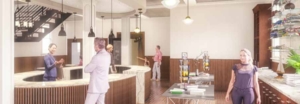

Jeff lytle
A mid Collier County’s centennial, one of its oldest buildings – erected by the county’s namesake founder – is on the verge of a restoration and new mission.
The stately Bank of the Everglades, a centerpiece of Everglades City, is getting a fresh foundation and gentle interior makeover so it can serve as a visitor center and community meeting place – and a source of community pride.
The project gets some additional notoriety from its architectural firm, MHK Architecture and Planning, which has designed commercial and residential projects that set the tone for modern Greater Naples, moving on from a Tuscan motif featuring stucco and red tile roofs. And MHK, now with five Florida offices and five more across the country, is working pro bono.
Mark McLean, one of five national directors for MHK, is excited because it is his and the firm’s first project of its kind – a combined preservation, restoration and remodeling – with a structure on the National Register of Historic Places since 1999.
“We always work with ‘new’,” he says. “This is a one-of-a-kind, special project.” “It’s my baby,” he adds. “It’s the right thing to do for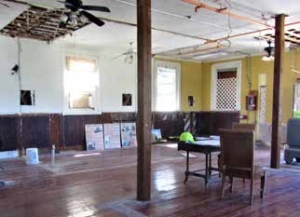 the community. It will be remarkable McLean explains MHK has brought all its technical skills to bear on the 1927 bank building, a year older than the Tamiami Trail, another landmark credited to Barron Gift Collier. The county and the original, smaller bank building were founded in 1923.
the community. It will be remarkable McLean explains MHK has brought all its technical skills to bear on the 1927 bank building, a year older than the Tamiami Trail, another landmark credited to Barron Gift Collier. The county and the original, smaller bank building were founded in 1923.
In the process of digitizing and studying the two-story bank’s bones, McLean says his MHK team – made up of fellow volunteers – realized it had no stairs. A fire escape filled the bill. Society President Patty Huff says the original pinewood floors were discovered under linoleum.
The Everglades City Historical Society, owner and sponsor of the redo, says the bank was part of a thriving downtown with a hospital, jail, theater, train station, library, city hall, laundry, hotel, general store and more. The society says Barron Collier thought big – he wanted to show visitors and others that the original county seat meant business. “The layout was modern,” the society says in a press release, “with a grid of streets centered on a city circle — a bit like Washington, D.C., or Paris.” “We had everything,” sums up Huff.
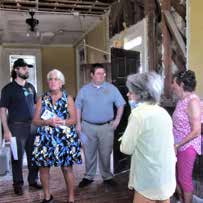 Blake Gable, the descendant who is CEO of today’s Barron Collier Companies, says: “It was a true company town.” Gable says the business and family members have contributed to the drive. “It’s good when you’re able to get in there and help,” he says. Hurricane Donna and Everglades City’s remote location nudged the county seat to East Naples in 1962, the same year the bank moved its operations to Immokalee. It became a rooming house, then a weekly newspaper office and a bed and breakfast inn – several times — until closing in 2017.
Blake Gable, the descendant who is CEO of today’s Barron Collier Companies, says: “It was a true company town.” Gable says the business and family members have contributed to the drive. “It’s good when you’re able to get in there and help,” he says. Hurricane Donna and Everglades City’s remote location nudged the county seat to East Naples in 1962, the same year the bank moved its operations to Immokalee. It became a rooming house, then a weekly newspaper office and a bed and breakfast inn – several times — until closing in 2017.
When the building is restored, the society promises, it will serve as the permanent location for the Everglades Area Visitor Center, with the first floor dedicated to an information desk with sightseeing brochures, a gift shop with local artwork, an art gallery and space for community gatherings. The vault will be used as a small theater featuring the 1957 movie “Wind Across the Everglades,” filmed in Everglades City and featuring Burl Ives, Gypsy Rose Lee and Christopher Plummer. The screening room will be dedicated to a previous owner of the building, Bob Flick, who was an extra in the film.
The second floor will include a community conference room and historical library. Fundraising efforts have been modest — including tours and bank-themed history books, note paper and tote bags. But a federal grant of $3 million secured by U.S. Rep. Mario Diaz-
Balart serves as a confidence-builder.
The bank will have a fellow historic attraction a few miles away. The Ted Smallwood Store, a former trading post, was a hub for settlers and indigenous people, still stands along the shores of Chokoloskee Bay.
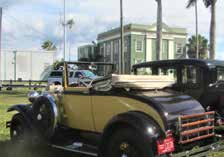 “The Everglades area is frequented by thousands of visitors each year who are hoping to get a glimpse of what Old Florida may have looked like,” says the historical society, “and they won’t be disappointed.”
“The Everglades area is frequented by thousands of visitors each year who are hoping to get a glimpse of what Old Florida may have looked like,” says the historical society, “and they won’t be disappointed.”
Architect McLean makes another point on the significance of the project. He says it offers a ray of hope to rebut the notion that “we have become a disposable society.” Huff is correct when she says of the bank, “They don’t make them like that anymore.”
For more information, go online to www.save-boe.org, call ECHS President Patty Huff at 239-719-0020, email: ESHP@hotmail.com.

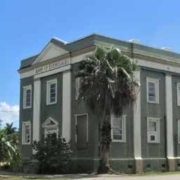

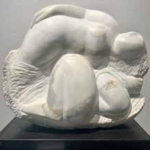
Leave a Reply
Want to join the discussion?Feel free to contribute!